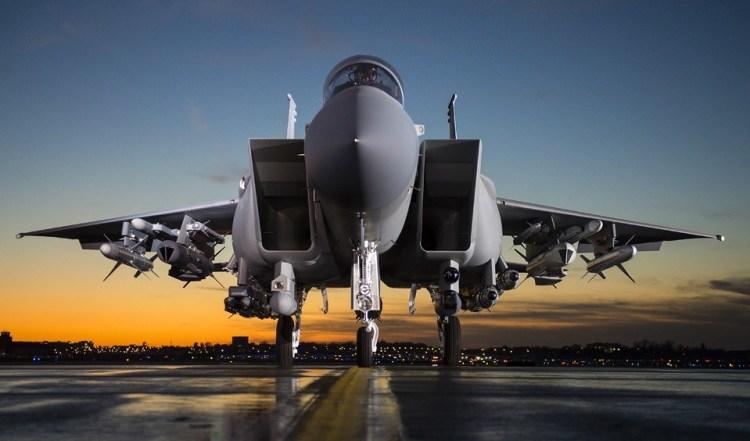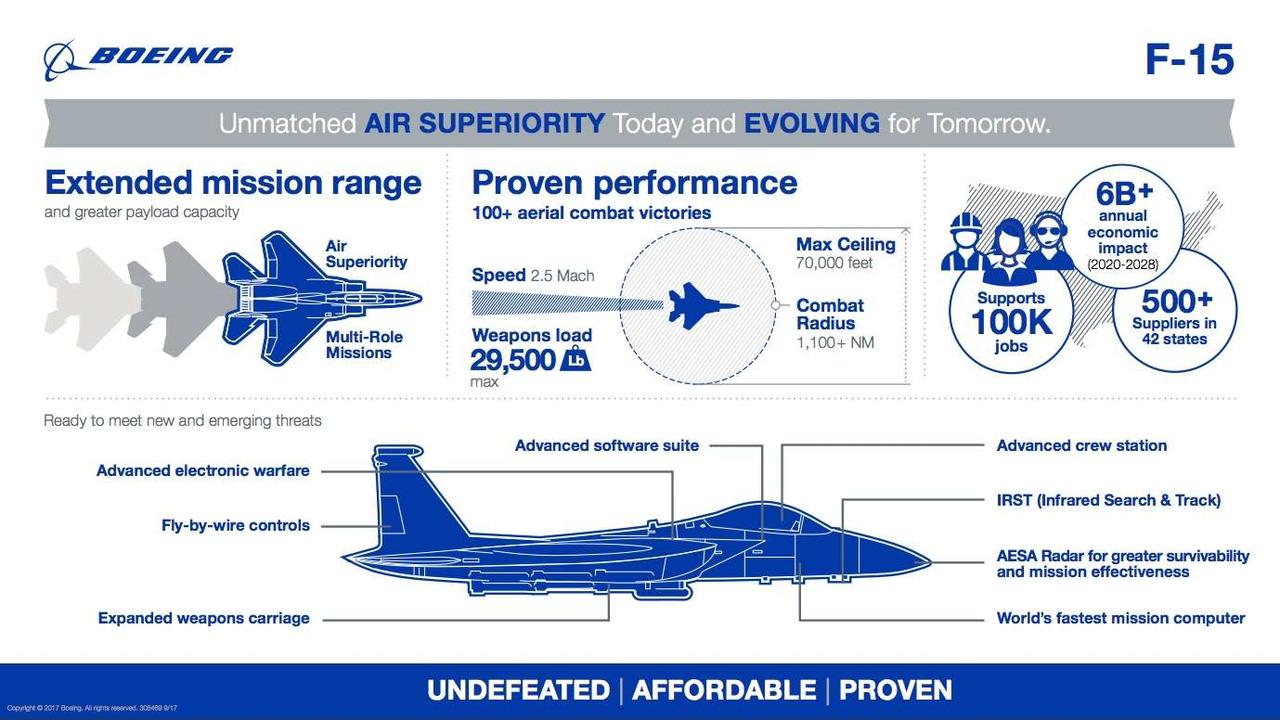The Air Force has outlined its major near term goals by submitting a five-year plan to Congress related to the Pentagon’s 2020 budget proposal that favors procurement of Boeing’s new F-15X fighter — seen as a more cost effective compliment to Lockheed Martin’s F-35, and now apparently eclipsed as the Air Force plans to buy 48 F-35s each year during FY 2021-23 instead of the 54 previously planned.
But the F-15X, which is Boeing’s upgraded F-15, is not necessarily in competition with the F-35, instead it represents Pentagon efforts at better battlefield integration against enemy targets:
In a future air fight, it’s possible that the more stealthy F-35A could get closer to enemies, spot them, then relay targeting data back to F-15Xs, which could launch the missiles at threats from a safe distance. The US military has embraced this kind of networked warfare as a whole, and the strengths of the F-15X and F-35A complement each other in such an environment.

The five-year plan calls for 80 F-15X fighters in a $7.8B investment that would increase from eight of the planes next year to 18 per year through 2024. Lockheed Martin’s F-35 will get $37.5 billion over the five years, according to the proposal, but in numbers cut down from prior projections.
Gen. Dunford, chairman of the Joint Chiefs of Staff, explained to the Senate Armed Services Committee last week that the Pentagon is pursuing the F-15X partly because it is “slightly less expensive for procurement than the F-35, but it’s more than 50% cheaper to operate over time and it has twice as many hours in terms of how long it lasts.”
This cheaper F-15X Super Eagle, able to carry more weapons though without the stealth capability of the F-35 (the F-15X can carry nearly two dozen air-to-
What appears a slowed trajectory for the roll out of the F-35 will likely touch off intense debate, which has already begun in the form of a letter sent to President Trump and Acting Defense Secretary Pat Shanahan from leading Republicans including John Cornyn and Ted Cruz of Texas, and Marco Rubio of Florida.
“As our nation’s only fifth-generation stealth fighter being built today, an investment in additional production and support for the F-35 fighter fleet is critical to ensuring the U.S. maintains air superiority,” five senators said in a letter last month, according to Bloomberg.
Some information about the proposed F-15 Advanced. The F-15X will have near identical features but will be offered in single and two seat configurations. Source: The Drive/Boeing
* * *
Bloomberg has further summarized the other key features of Air Force’s five-year plan as follows:
- Northrop Grumman Corp.’s new B-21 stealth bomber would get $20 billion over the next five years, with funding jumping from $3 billion in 2020 to $5 billion in 2023. Of the $5 billion, $2.3 billion would be for the first year of major procurement.
- Boeing would get $19 billion through 2024 for purchase of 66 of its KC-46 tankers, fewer than the 75 previously planned through 2023. The new plan calls for 15 in 2021 but 12 each in 2022 and 2023, instead of the 15 previously planned each year.
- The service plans to spend $12.4 billion through 2024 procuring space systems.
- Research on the Next Generation Overhead Persistent Infrared early-warning satellite would total $11.4 billion through 2024.
- Lockheed’s F-22 fighter could see as much as $18 billion in spending for upgrades and support.
- Air Force spending on setting up and running the new Space Force is budgeted at $363 million through 2024, averaging about $72 million annually.
- Space investments for fiscal 2020 include $1.67 billion for space launch and ground service agreements pitting Elon Musk’s SpaceX against the United Launch Alliance that’s a joint venture between Lockheed and Boeing; $1.3 billion for Lockheed’s GPS-III satellites and Raytheon Co.’s OCX ground control station program; and $1 billion for satellite communications programs such as the family of “Beyond-Line-of-Sight” terminals.
- The five-year plan calls for spending as much as $8.7 billion on precision-guided weapons made by Lockheed, Boeing and Raytheon. That includes $1.4 billion on the new Small Diameter Bomb-II that can attack both fixed and moving targets in bad weather, $2 billion for the GPS-guided Joint Direct Attack Munition and $2.2 billion on the extended-range stealth Jassm missile used last year against Syrian military targets.
* * *
via ZeroHedge News https://ift.tt/2TPVyc3 Tyler Durden
